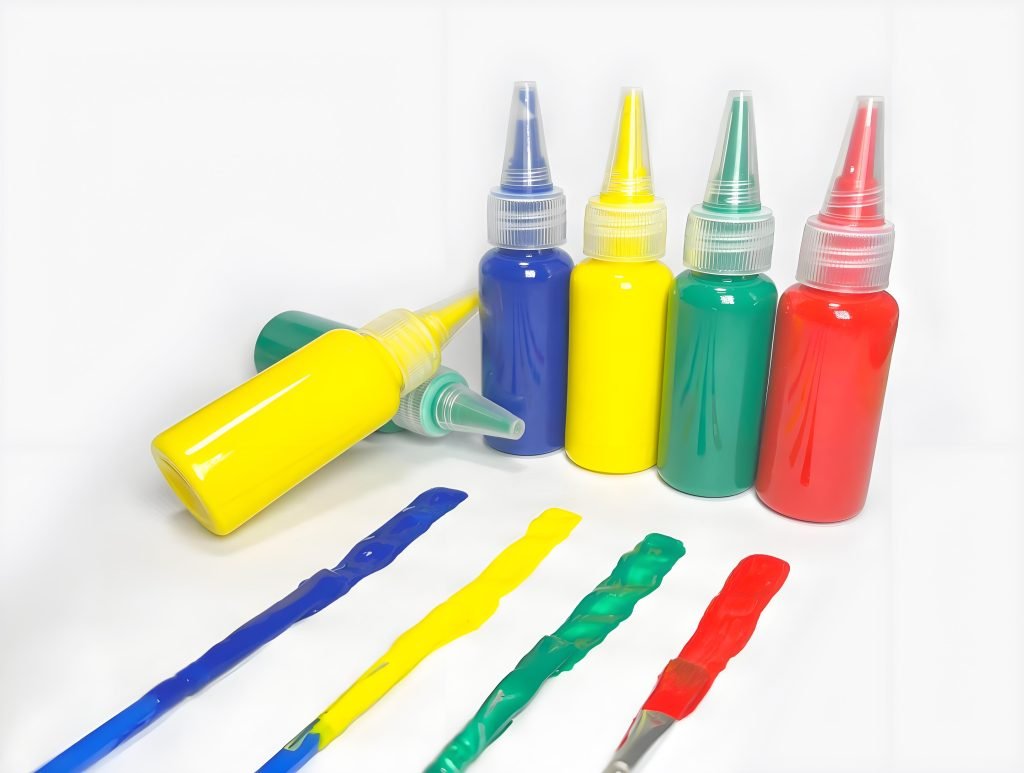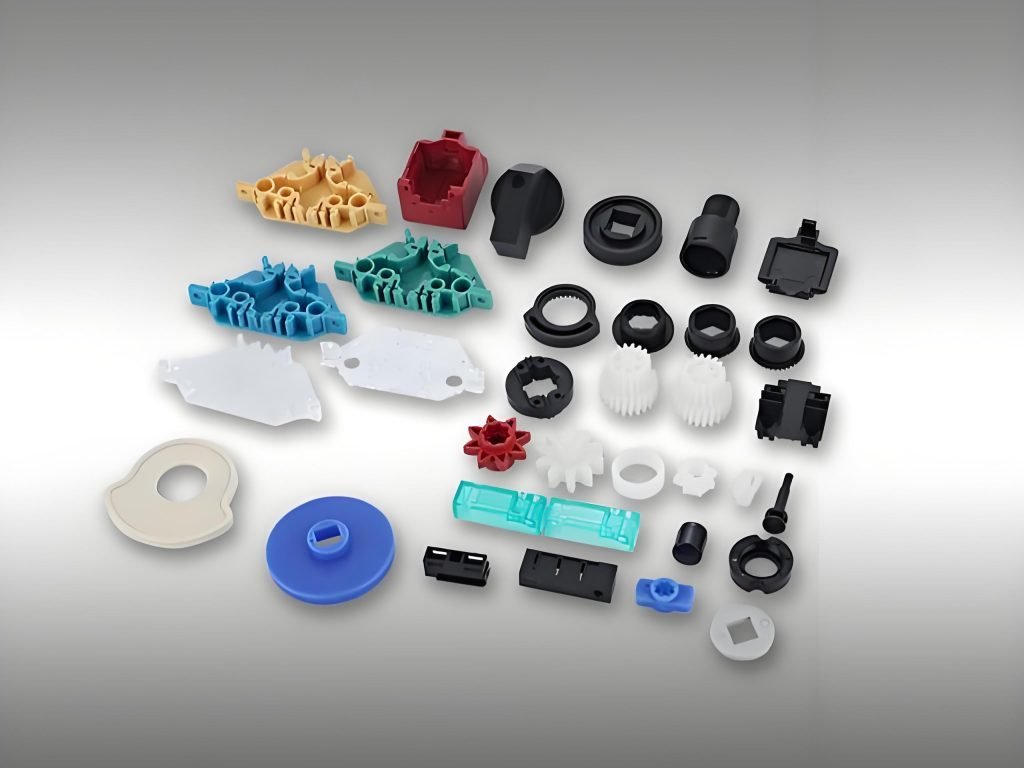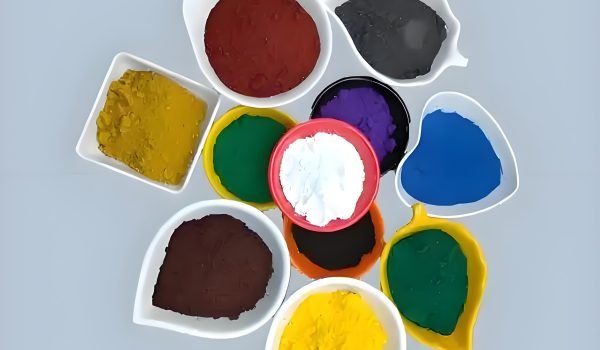Injection molding is perfect for mass-producing parts in a single, consistent color. Pigment is typically mixed into the raw molding material before production begins, which means secondary finishing processes like powder coating or electroplating are often unnecessary. This method ensures the color permeates the entire part. However, maintaining color consistency across multiple batches remains a big challenge.
So, how to control injection molding color mixing to ensure color consistency? This article goes over the basics of high-quality injection molding color mixing, explains the importance of color consistency in injection molding, and discusses effective strategies to measure, control, and address color discrepancies to achieve superior and aesthetically appealing final products.
How Are Injection Moldings Colored?

Selecting the right coloring method is crucial for balancing cost, quality, and order volume. The best technique depends entirely on your production scale and quality requirements. Here are some methods:
- Masterbatching
This is the most effective method for large-scale production across multiple batches. A color masterbatch is a high-concentration pigment pre-mixed with a polymer carrier, which is then blended with natural plastic pellets. The carrier can be a universal type or a polymer that matches the base material. With a minimum order of ~2 tons (enough for ~48 tons of material), it is only viable for very large orders. It ensures excellent color consistency across batches and does not stick to equipment like dry powders.
- Compounding
When you want to make a high volume of color parts, the most effective color method is compounding. Compounding is a pre-colored injection-molded polymer that does not require any mixing operation in the injection molding machine. This compounding can be purchased from a third-party supplier and customized to the color for production; compared with masterbatch, it can be purchased in a small volume. This compound includes the injection polyester and piment with a minimum order quantity of approximately one ton. It is essential to achieve color consistency, and the cost is higher than that of masterbatching.
- Dry Pigment Mixing
For low-volume production, the simplest and most effective method is dry pigment mixing. This process involves mixing the pigment with natural (uncolored) injection material, which is then poured into the injection machine. This coloring technique has no minimum dosage requirement, making it a cost-effective solution for prototyping and small orders.
However, it is not suitable for applications requiring color consistency. The pigment and polymer often blend imperfectly, and some plastic colorant for injection molding may stick to the machine’s interior—a phenomenon known as plate-out. While using multi-cavity or family molds can effectively resolve color consistency issues for assembled parts, the cost of these molds is very high.
- Secondary Finishing
Secondary finishing is suitable for situation where the number of molds is very limited or another choice in powder coating or other finishing manufacturing. The method is very slow and not suitable for medium or mass production. However, if you want to customize the color or small parts that require color consistency across different areas. Second finishing can add texture or a UV-resistant coating to color parts.
The Importance of Color Consistency in Injection Molding
In injection molding, achieving color consistency is a critical marker of quality. It ensures components match, protects brand identity, and meets stringent customer expectations across industries.

- Ensures Multi-Part Components Match
Color consistency is vital for products assembled from multiple components. Multi-parts cannot be accepted for color difference, especially for two parts that match. For application scenarios that use multiple identical components (such as connectors that may be sold in packs of one dozen or more), color consistency within the same batch is of great importance.
- Upholds Brand Identity
Many companies use specific, signature colors across their product lines. Consistent color reproduction is essential to maintain this unique brand identity, build brand recognition, and convey a message of quality and reliability.
- Meets Client Requirements for Repeat Orders
Clients expect identical color matching across production runs, even when orders are placed months or years apart. Tha is to say, for the repeated orders of its injected molds, the client wants to match the color consistency for different orders.
- Critical for Industry Standards
Color consistency is a non-negotiable requirement in many sectors like:
- Automotive: Ensures interior and exterior trim components match perfectly.
- Consumer Electronics: Creates a unified, premium look across devices and accessories.
- Consumer Goods & Packaging: Builds product recognition and consumer trust on retail shelves.
By understanding the concept of color differences and their impact on the final product, manufacturers can take proactive measures to control color variations, thereby producing high-quality and visually appealing injection-molded products.
5 Best Ways to Improve Color Consistency
Achieving color consistency in injection molding is complex, influenced by material properties, machine temperature, and processing techniques. Here are five key methods to significantly improve color consistency.
- Standardize with a Color System
The most effective way to ensure consistency is to select a standard color from an industry system like Pantone colors or RAL chart. This provides an objective reference for all future production batches, eliminating guesswork. Using a standard color also simplifies sourcing, as material suppliers often have pre-compounded resins available, reducing cost and lead time.
- Utilize Multi-Cavity or Family Molds
Aiming to achieve color consistency across the parts in an assembly, it is recommended to have a set of molds. A type of multi-cavity injection molding, each cavity in the injection mold manufactures a different part. Since each part uses the same batch of plastic or the plastic uses the same concentration of pigment, each part can match perfectly.
If each component is similar in geometry, the effect of the mold will be better. But if each component is unique, then the mold needs to fix a more complex gating system and incur a lot.
- Control Material Humidity
When pouring color pigment into the injection machine, controlling humidity around the resin and powder is important. Before the color pigment and resin mix, the resin should be dried immediately, and the pigment should be added as soon as possible to minimize contact with the air.
- Employ Precision Metering Equipment
Coloring techniques where the color is added in the injection molding machine (masterbatching, dry pigment mixing) can benefit from precise metering of the colorant. The most accurate way to achieve the right ratio of resin to colorant is to use high-quality equipment such as a gravimetric blender, which can be mounted on the molding machine.
- Apply Secondary Finishing for Small Batches
For very small batches or prototypes where achieving consistent color in the mold is impractical, secondary finishing (e.g., spray painting) is a viable solution. It allows for perfect color matching on finished parts, though it is not cost-effective for mass production.
Partner With Fecision for High-Performance Injection Molding Services
Looking for a reliable manufacturer to help you deal with injection molding projects? You’ve come to the right place!
Fecision delivers a diverse range of high-performance injection molding, designed to meet the exacting demands of modern machining across automotive, aerospace, medical, and industrial applications.
Our ISO 9001-certified process delivers the color consistency for plastic part production. We utilize standardized color systems and precise metering equipment to ensure perfect coloration across all your components. With industry-proven expertise, we offer advanced technologies for color-consistent injection molding, thermoforming, compression, and CNC machining. This provides distinct advantages in production volume, part complexity, material selection, and cost efficiency.
Ready to achieve precision and efficiency in your plastic injection molding? Contact Fecision for a tailored solution for your prototyping and production needs right away!




